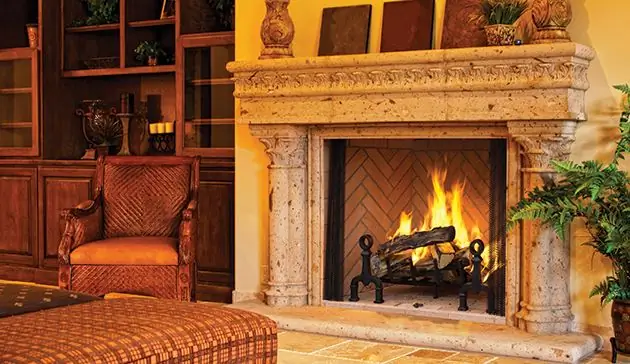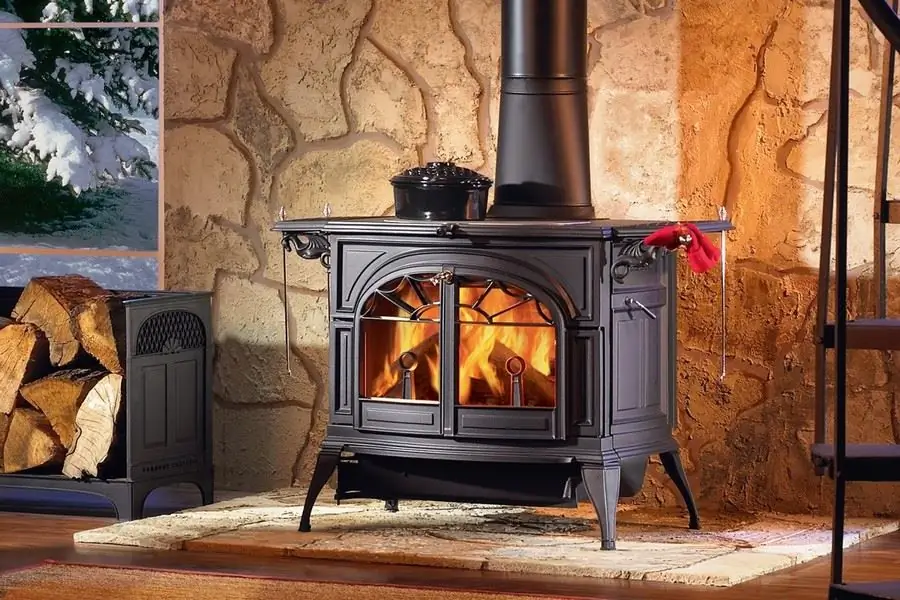Fireplaces and stoves have been used to heat country houses since ancient times. Modern materials and innovative design ideas allow you to create functional and at the same time beautiful designs that will decorate any interior. The firebox is the main element of the stove or fireplace.
Types of stove and fireplace inserts
There are two main types of fireboxes: open and closed. Installation rules, the choice of finishing material and other design issues depend on their design. A furnace is a chamber in which fuel (wood, coal, fuel briquettes, gas) burns.
By execution type:
- Open. Classic variant. Efficiency 10-20%. Firewood in it burns quickly. The design is fire hazard. Sparks and embers may fall on the floor and nearby objects. Oxygen from the room is quickly absorbed, it is necessary to ventilate it. The flame is sensitive to sharp wind currents. A large layer of soot forms on the chimney, it must be constantly removed. The advantage of an open firebox is the ability to watch an open fire.
- Closed. The firebox is equipped with a door. It is made of heat-resistant glass, metal, cast iron. Glass doors allow you to admire the flames, the designs are popular among buyers. The efficiency of the closed-type furnace is 80-85%. It is safe, the firewood in it smolders slowly, this one saves on fuel. A fireplace or stove can be left unattended without fear of fire.
- Chimney less clogged. Enclosed design range: classic, radial, prism, tunnel, corner, architectural, custom.


According to the material of manufacture of fireboxes are:
- Cast iron. The material is durable, heat-resistant, has a high heat transfer, long service life, resistant to deformation, allows you to heat large areas. Fireboxes are manufactured according to standards, the choice of models is small, they are expensive, special skills are required for installation.
- Steel. Made from heat resistant material. The design provides two cases: internal (made of cast iron) and external (made of steel). The choice of models is wider, designs of non-standard shapes and sizes are on sale.
Choice of firebox power
The power of the furnace is an important indicator. The functionality of the structure depends on it. Before starting construction work, you need to calculate the area of \u200b\u200bthe room. It is necessary to determine the role of the fireplace: the main source of heat or an additional, decorative element in the design of the room.
Manufacturers indicate all the technical characteristics of the goods, their power must be clarified in the store. For space heating in 40-100m2 you will need a fireplace insert with a power of 8-12 kW. Approximate calculation formula: 1kW per 10 m2.
Firebox elements
The firebox has walls, a base, a smoke box, a grate, an ash pan, a slide damper and doors.
- Walls. Their number depends on the design of the fireplace. They can be made of steel, cast iron, fireclay bricks, stone, tempered glass.
- Foundation. The lower part of the structure is made of brick stone or cast iron.
- Smoke box. Collects and removes gases and smoke through the chimney to the street. It can be part of the firebox design, made of a similar material, or is a separate part that is attached to the wall, chimney.
- Grate. It is located at the bottom of the furnace, provides air flow. Allows coals and ashes to fall into the ash pan.
- Ash pan. Ash collection box. Located under the grate. It needs to be cleaned in a timely manner.
- Slide damper. located in the chimney. If necessary, it can be blocked.
- Door. Available for closed fireboxes. Available in cast iron, steel or tempered glass.
Choosing a fireplace insert is a responsible process. It is necessary to take into account many characteristics: the area of \u200b\u200bthe room, power, type of furnace, material of manufacture, design.






